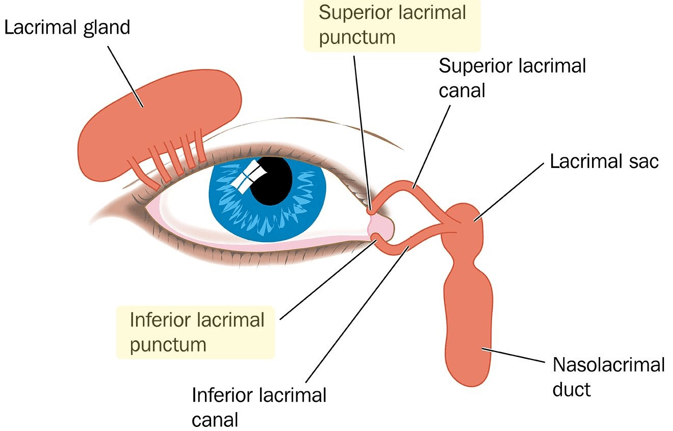A nurse is preparing to administer eye drops to a child.
Which of the following actions should the nurse take?
Apply pressure to the lacrimal punctum after administering the drops.
Position the child side-lying on the bed before administering the drops.
Wipe from the outer to the inner canthus after administering the drops.
Flush the eye with normal saline solution before administering the drops.
The Correct Answer is A
a. Apply pressure to the lacrimal punctum after administering the drops.
When administering eye drops to a child, the nurse should apply gentle pressure to the lacrimal punctum (the small opening in the inner corner of the eye) after administering the drops. This can help prevent the medication from draining into the tear duct and being absorbed into the bloodstream, which can reduce systemic side effects.

Nursing Test Bank
Naxlex Comprehensive Predictor Exams
Related Questions
Correct Answer is C
Explanation
a.Adequate fluid intake is important while taking ciprofloxacin to prevent dehydration, especially if diarrhea occurs.
b. Ciprofloxacin can disrupt the normal balance of bacteria in the gastrointestinal tract, potentially leading to diarrhea. Informing the client about this possible side effect allows them to be prepared and take appropriate measures, such as maintaining hydration and notifying their healthcare provider if diarrhea becomes severe or persistent. However, warning about sunburnis crucial as it addresses a specific side effect (photosensitivity) that clients may not be aware of, and it provides actionable advice to mitigate the risk (use of sunscreen and protective clothing).
c.Ciprofloxacin, like other fluoroquinolone antibiotics, can increase sensitivity to sunlight (photosensitivity). Clients should be advised to use sunscreen, wear protective clothing, and avoid prolonged sun exposure while taking this medication.
d.Ciprofloxacin should not be taken with antacids, calcium supplements, or dairy products because they can interfere with the absorption of the medication. It's best to take ciprofloxacin either 2 hours before or 6 hours after taking antacids or products containing calcium, magnesium, aluminum, iron, or zinc.
Correct Answer is B
Explanation
Range-of-motion exercises can be safely performed by assistive personnel under the supervision and direction of the nurse. It helps to maintain the mobility and function of the client's hands while in restraints.
Whether you are a student looking to ace your exams or a practicing nurse seeking to enhance your expertise , our nursing education contents will empower you with the confidence and competence to make a difference in the lives of patients and become a respected leader in the healthcare field.
Visit Naxlex, invest in your future and unlock endless possibilities with our unparalleled nursing education contents today
Report Wrong Answer on the Current Question
Do you disagree with the answer? If yes, what is your expected answer? Explain.
Kindly be descriptive with the issue you are facing.
